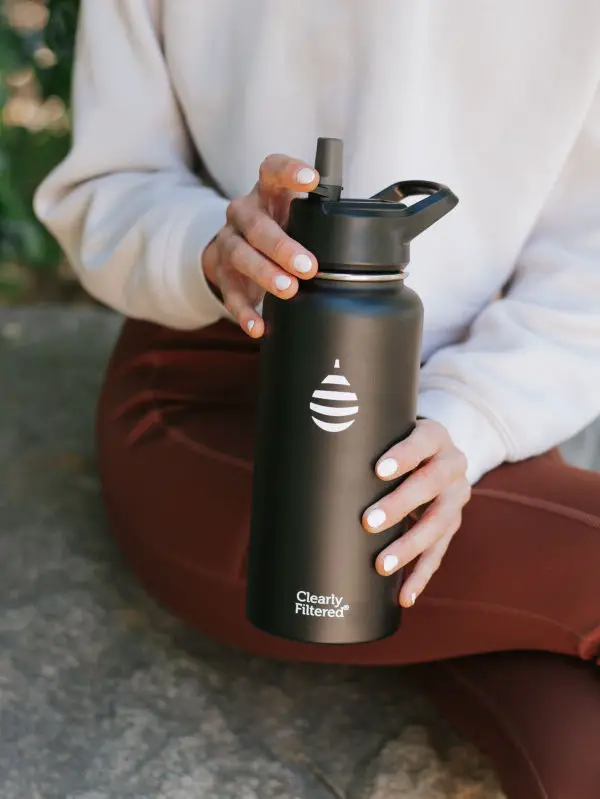The ingredients found in Kool-Aid can sometimes be a mystery, with long, complex names that leave us wondering what we’re actually consuming. From artificial dyes that give Kool-Aid its vibrant colors to controversial additives like artificial sweeteners and preservatives, we’ll uncover what goes into this beloved drink and whether or not Kool-Aid really is good (or bad) for us.
In this post, we’ll also explore the potential health implications of Kool-Aid ingredients so you can better understand what you (and your kids) are actually drinking when you enjoy this classic beverage.
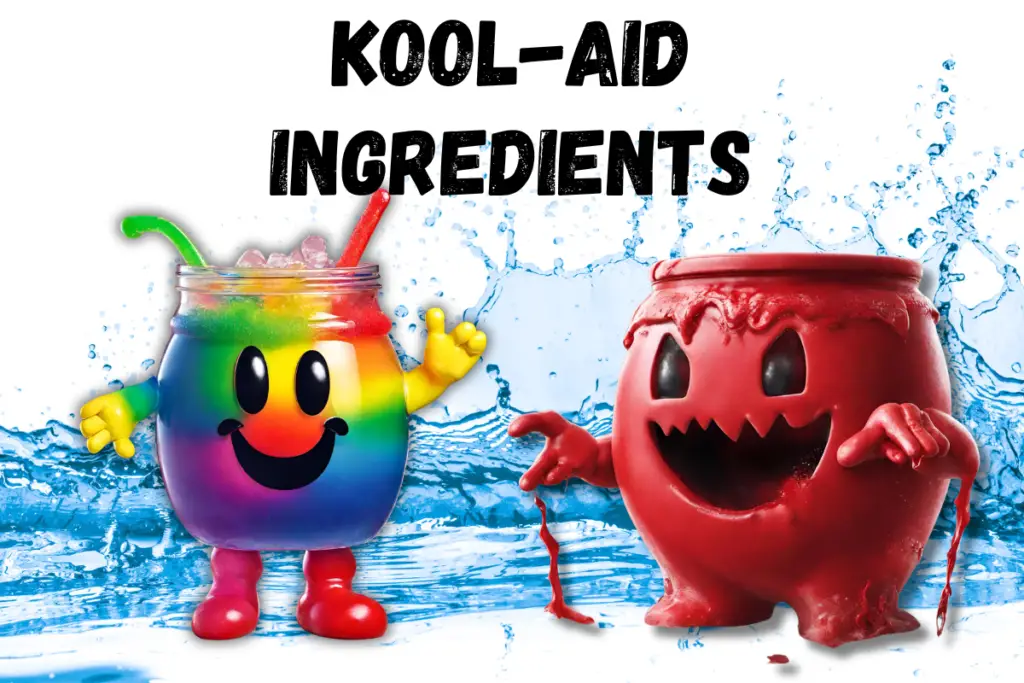
What is Kool-Aid
Kool-Aid is a popular brand of flavored drink mix that allows consumers to prepare sweet, fruit-flavored beverages at home. It was originally introduced in 1927 by Edwin Perkins and has since become an iconic and widely recognized brand in the United States.
To prepare Kool-Aid, you typically mix the powdered drink mix with water and sugar (optional, as some varieties come pre-sweetened), according to the instructions on the package. The result is a colorful, sweet, and fruity beverage that can be served chilled, often as a refreshing drink during hot weather.
Kool-Aid has gained popularity for its affordability, ease of preparation, and wide range of flavors, making it a favorite among families, especially children. It’s often associated with summertime and outdoor gatherings and is available in various package sizes, including single-serving packets, canisters, and liquid concentrates.
Over the years, Kool-Aid has become more than just a beverage; it’s a cultural phenomenon and has even inspired various recipes and creative uses beyond just drinking. Additionally, Kool-Aid is known for its colorful marketing and mascot, the “Kool-Aid Man,” a giant smiling and waving pitcher bursting through walls, as a fun and energetic mascot to deliver the refreshing drink.
Kool-Aid Ingredients
Artificial Dyes
All Kool-Aid products contain artificial food dyes such as Red 40, Blue 1, Yellow 5, and/or Yellow 6. I even found many of the Kool-Aid flavors contained two or three different food dyes.
Here are all the food dyes in Kool-Aid Liquids, Bursts, and Jammers:
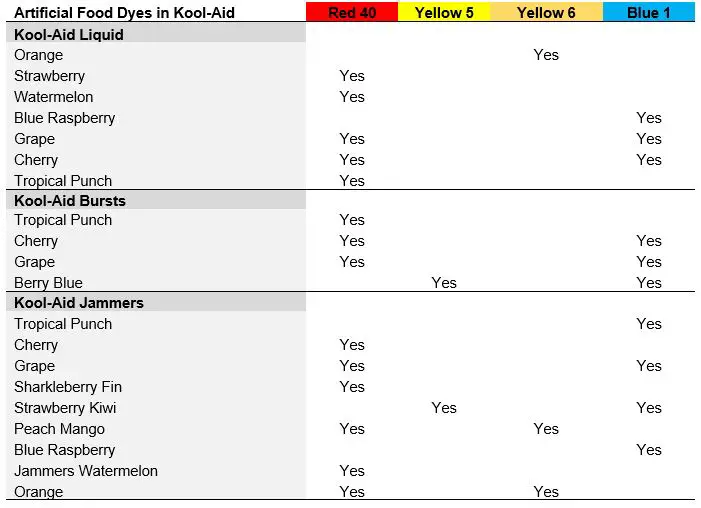
And these are all the food dyes in Kool-Aid Powders including Canisters, Packets, and On-The-Go products:
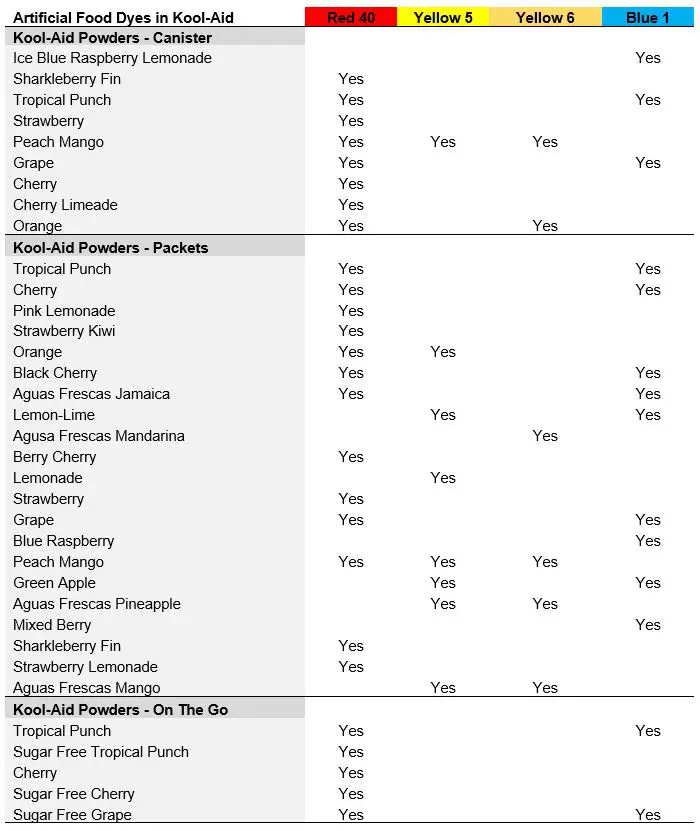
Food dyes are added to make products more appealing. Unfortunately, there is a growing body of evidence that suggests ingesting food dyes comes with potential health risks, particularly for children.
All of the food dyes found in Kool-Aid (Red 40, Blue 1, Yellow 5, and Yellow 6) have been shown to cause hypersensitivity reactions.
Some studies suggest a connection between Red 40, also known as Allura Red AC, and behavioral issues including hyperactivity or attention deficit hyperactivity disorder (ADHD), and allergic reactions.
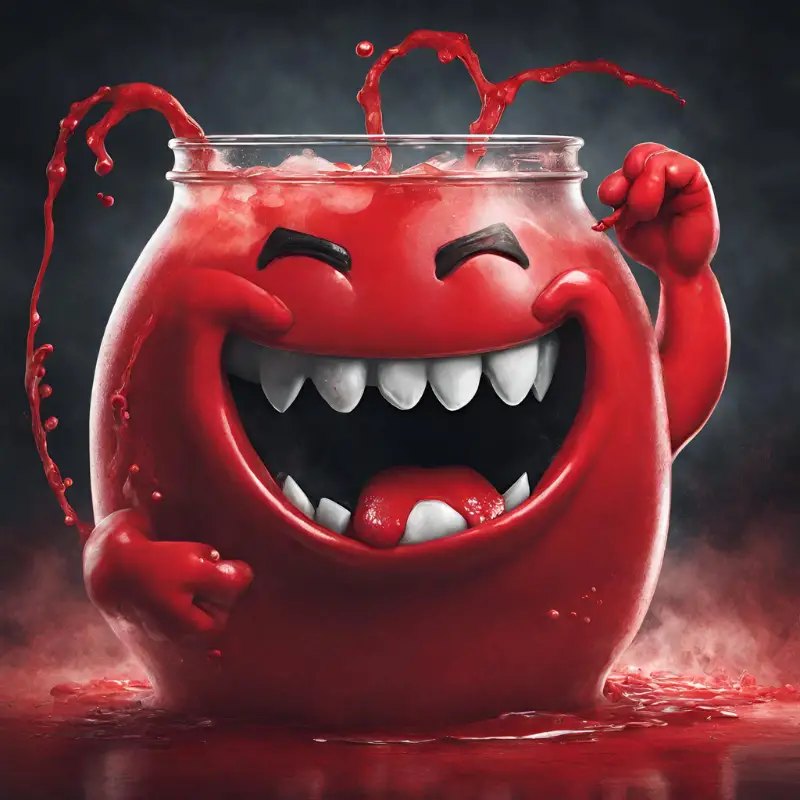
Red 40, Yellow 5, and Yellow 6 also contain a substance called “benzidene,” which is known to be a carcinogen, meaning it can cause cancer. The levels of benzidene in these dyes are supposed to be very low and within safe limits according to FDA testing.
The problem with the routine test used by the FDA is they only check for free (unbound) benzidene. Unfortunately, bound benzidene is present in these artificial dyes at much higher levels than free benzidene, which can be released in our intestines.
This means that there’s a possibility we’re being exposed to more cancer-causing substances than we realize, especially because children consume various foods containing different dyes and chemicals (such as in many Kool-Aid products).
In Europe, they’ve taken steps to address this issue by putting warning labels on foods with these dyes, as they can make children exceptionally hyperactive. In the United States, such labeling hasn’t been implemented yet.
Some experts suggest shifting to natural colorings derived from fruits and vegetables as an alternative to artificial dyes.
Artificial Sweeteners
All Kool-Aid Liquids, Bursts, and Jammers contain sucralose, and Kool-Aid Liquids also contain acesfulfame potassium (or Ace-K).
Both sucralose and acesfulfame potassium are artificial sweeteners that are approved by the FDA and widely used in the food and drinks industry. They are practically zero-calorie and can help individuals cut down on calorie intake typical of natural forms of sugar.
Some studies have suggested that exposure to artificial sweeteners such as sucralose and acesfulfame potassium may alter taste perception, causing individuals to find naturally sweet foods less appealing and potentially leading to increased consumption of highly processed, calorie-dense foods.
However, studies on mice suggest acesulfame potassium may disrupt the gut microbiome and cause increased weight gain. In some individuals, sucralose has been found to affect blood sugar and insulin levels.
High Fructose Corn Syrup
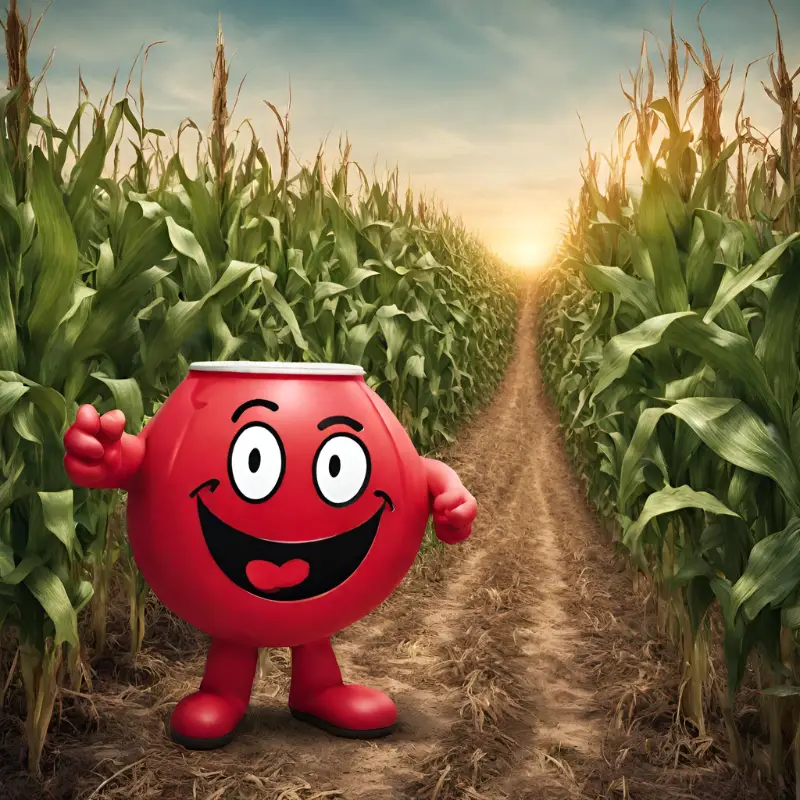
High fructose corn syrup (HFCS) is a type of rapidly absorbable carbohydrate and is the second main ingredient (after water) in Kool-Aid Bursts and Jammers. HFCS has been a subject of considerable concern regarding its potential health effects, particularly among children.
Studies have linked excessive HFCS intake to a range of health issues in children, including obesity and type 2 diabetes. This is because HFCS can lead to an increased intake of empty calories, contributing to weight gain and related health problems. Its high fructose content can affect appetite regulation, potentially leading to overeating.
Sodium
Kool-Aid products, on the whole, contain very low amounts of sodium, typically less than 35 mg per serving (or 2% of the recommended daily intake). The strawberry flavored drink mix powder has the highest sodium content of any Kool-Aid product at 45 mg per serve.
Kool-Aid Jammers contain 30 mg of sodium per serve, and there’s 35 mg of sodium in Grape flavored Jammers.
Depending on the flavor, sodium in Kool-aid Bursts range from 25 to 35 mg per serve, and the packet and canister forms of Kool-Aid drink mix powders range in sodium from 0 to 45 mg of sodium per serve.
A number of Kool-Aid products have zero sodium including Kool-Aid liquids (except for Orange), the sweetened versions of On-The-Go powders, and some drink mix powders (in canister or packet form).
I compared the sodium levels in Kool-Aid with various sodas, juices (apple and orange), and coconut water. Most of these drinks come in 12 fl oz bottles or cans, and if you drank all 12 fluid ounces you would typically get more sodium than from a single serving (8 fl oz) of Kool-Aid. However, you get about the same amount of sodium from Kool-Aid as many sodas or even coconut water if you drank equal volumes of each. Again, strawberry flavored drink mix powder has the maximum sodium content of any Kool-Aid product and, for every 8 fluid ounces consumed, has more sodium than Coke, coconut water (Vita Coco brand), or Mountain Dew.
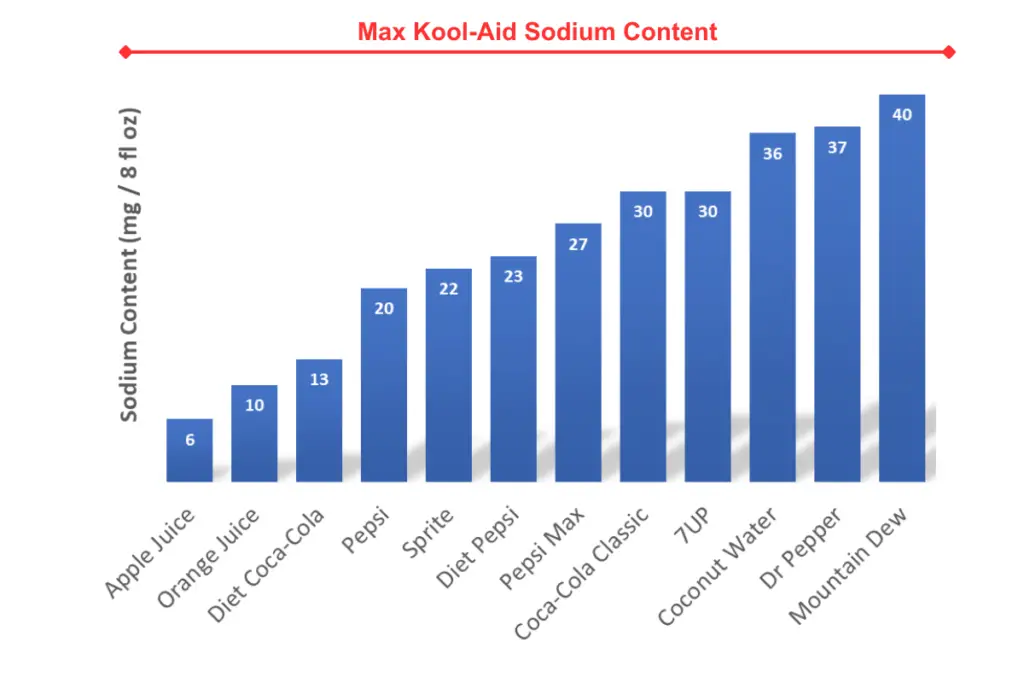
This really isn’t too concerning however – for example, there’s way more sodium in electrolyte drinks such as Gatorade (108 mg/8 fl oz), Powerade (160 mg/8 fl oz), or Pedialyte (247 mg/8 fl oz) than in Kool-Aid.
The recommended daily intake (RDI) of sodium for adults aged 14-70 years is 1,500 mg, and for children and adolescents, it ranges from 1,200 mg (9-13 years) to 110 mg (0-6 months). So, the amount of sodium in all Kool-Aid products is quite small, but if you or your kids are having multiple servings of Kool-Aid per day then the sodium can definitely start adding up.
Unfortunately, adults and children in the United States often surpass their daily recommended sodium intake, primarily due to the high sodium content in many processed foods and snacks. In this context, it’s important to be aware that even low-sodium products like Kool-Aid contribute to the overall sodium consumption, especially when consumed alongside other foods that may be high in sodium.
Calcium
You’ll find calcium silicate and calcium phosphate in some Kool-Aid products.
Calcium silicate is an anticaking agent and only found in the Ice Blue Raspberry Lemonade Kool-Aid power canisters. It prevents the formation of lumps and helps maintain the free-flowing quality of the powder.
Calcium phosphate is in all of the Kool-Aid powders (canisters, packets, and On-The-Go products), excluding the Ice Blue Raspberry Lemonade flavored Kool-Aid power canister (mentioned above). It is used to fortify beverages with calcium and improve their texture.
Depending on the serving size, calcium additives in Kool-Aid powders provides between 2% and 4% of your daily required calcium.
Calories
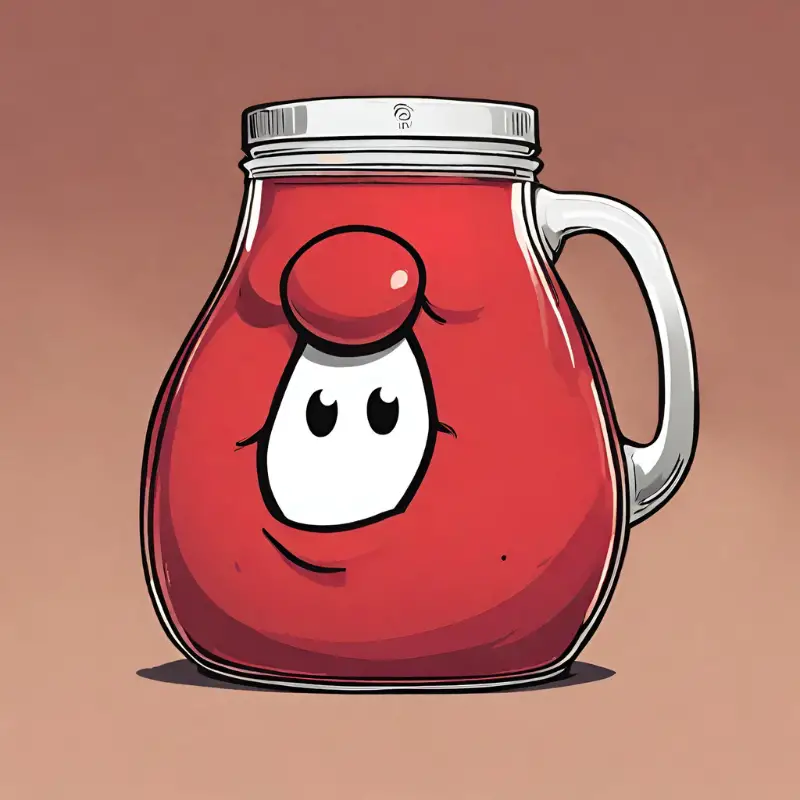
The sugar content in Kool-Aid is relatively low, which also helps keep calorie intake down. Kool-Aid liquids and the drink mix powders in packet form have zero calories. The sugar-free Kool-Aid On-The-Go powders are also calorie free.
Here are the calories in all other Kool-Aid products:
- Kool-Aid Bursts – 20 Calories
- Kool-Aid Powders (Canisters) – 60 Calories (except Ice Blue Raspberry Lemonade flavor which is 70 calories)
- Kool-Aid Jammers – 45 Calories (except Orange flavor which is 70 calories)
- Kool-Aid On-The-Go powders (sweetened flavors) – 30 Calories (half the packet).
Some of these calorie values may be lower than what’s written on your Kool-Aid powder ingredients list. This is because powder serving sizes are typically for 12 fl oz (about 2 tablespoons worth), whereas all of the calories listed above are for 8 fl oz servings – for easier comparison.
To put these calories in perspective, a bottle of coconut water (11 fl oz) has about 60 calories and a coke (12 fl oz) has 150 calories. So, Kool-Aid calories are definitely not on the high side and you can always opt for the sugar-free (calorie-free) versions if necessary.
Preservatives
Potassium Sorbate and Sodium Benzoate:
Potassium Sorbate can be found in all flavors of Kool-Aid liquids and Bursts. Sodium Benzoate is in all flavors of Kool-Aid Burts.
These preservatives are commonly used to prevent the growth of microorganisms and extend the shelf life of foods and beverages. They are generally recognized as safe when used within established limits. However, excessive ingestion of these additives may contribute to high sodium intake, which can have adverse health effects, particularly for individuals with hypertension or those at risk of heart disease.
Calcium Disodium EDTA:
Calcium Disodium (EDTA) is a type of preservative that helps maintain the freshness of products by preventing color and flavor changes. EDTA is found in all flavors of Kool-Aid Bursts and Jammers.
While it is considered safe, there are some concerns about its long-term consumption. Calcium disodium EDTA can bind to certain minerals in the body, potentially reducing their availability. However, this effect is more likely to be significant in cases of extremely high and prolonged intake, and it’s generally not a concern for people with a balanced diet.
Glycerol Ester of Wood Rosin:
Glycerol Ester of Wood Rosin (GEWR) is an ingredient found in some beverages, like the Tropical Punch flavor of Kool-Aid liquids and Bursts. It serves as an emulsifier and stabilizing agent, helping to keep the ingredients in these drinks properly mixed. GEWR is derived from wood rosin, a natural resin obtained from pine trees.
Importantly, GEWR is an approved food additive both in the United States and Europe.
In the U.S., the FDA regulates the use of GEWR in beverages. According to FDA regulations, it can be used to adjust the density of citrus oils in beverage preparations. This is why its been used in the Tropical Punch flavored Kool-Aid. The FDA states that the amount of this additive (GEWR) should not exceed 100 parts per million (ppm) in the final beverage.
In Europe, the Panel on Food Additives and Nutrient Sources evaluated the safety of glycerol esters of gum rosin (GEGR), which are similar to GEWR, for use as a stabilizing and emulsifying food additive in specific beverages. They also proposed a maximum allowable level of 100 ppm (or 100 mg/l) for GEGR.
Regarding safety concerns, the Joint FAO/WHO Expert Committee on Food Additives established an acceptable daily intake (ADI) of 0-25 mg/kg body weight per day for glycerol esters of wood rosin (GEWR) and GEGR. However, there are some concerns regarding the characterization and chemical equivalence of GEGR and GEWR. Data gaps in toxicity studies and insufficient information on the chemical composition of GEGR have raised questions about its safety as a food additive at proposed use levels.
In summary, while GEWR is approved for use in beverages in both the U.S. and Europe, concerns exist regarding GEGR, a similar substance. The available data suggest that further research is needed to ensure the safety of GEGR as a food additive at proposed use levels.
Vitamins in Kool-Aid
Vitamin C
Probably the best thing going for Kool-Aid is it’s quite a good source of vitamin C.
Jammers have the highest vitamin C content of all Kool-Aid products at a Daily Value (DV) of 120% (based on a 2,000 calorie diet). This means one Jammer pouch will give you more than your daily vitamin C requirement – not bad!
Kool-Aid drink mix powders all have a 10% DV of vitamin C, except for the sugar-free version of the Tropical Punch flavored On-The-Go powdered sachets which has about 14 mg of vitamin C (or 15% DV). However, Kool-Aid Liquids and Bursts contain no vitamin C at all.
Vitamin E
Cherry and Tropical Punch flavored On-The-Go Kool-Aid each contain Vitamin E acetate. This provides about 10% DV of Vitamin E.
While vitamin E acetate is a synthetic form of vitamin E used in dietary supplements and fortified foods, it is metabolized in the body to its active form, alpha-tocopherol, which acts as an antioxidant.
Kool-Aid as an Electrolyte
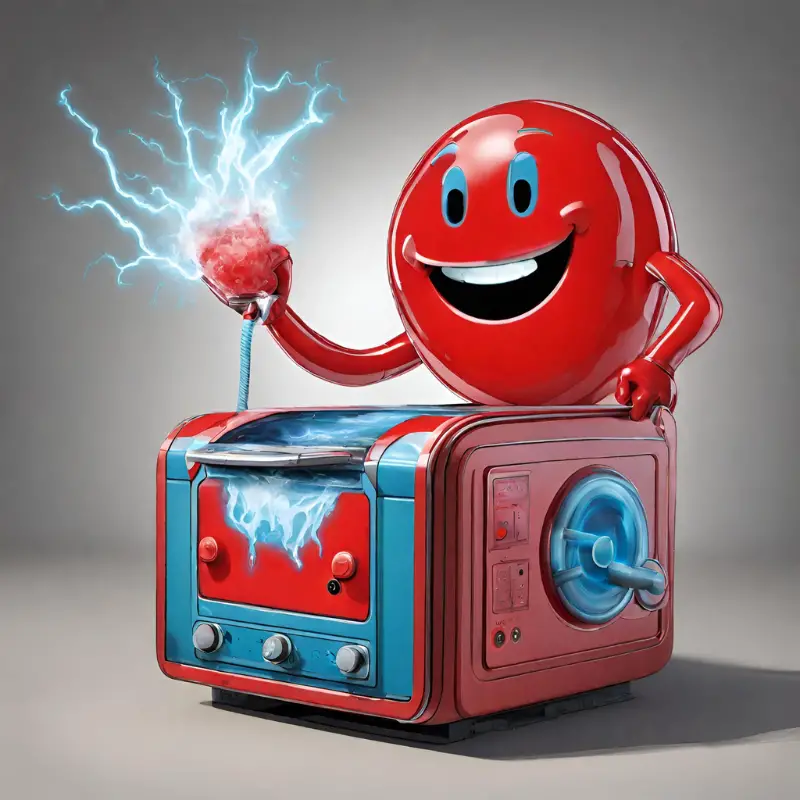
Kool-Aid is not an electrolyte beverage.
Electrolyte drinks are composed of water, carbohydrates (sugar), and electrically charged essential minerals such as sodium, potassium, calcium, magnesium, chloride, bicarbonate, and phosphate. These minerals are vital for key bodily functions, including nerve transmission, muscle contractions, and maintaining proper fluid balance.
Electrolyte beverages are formulated to quickly replenish the essential minerals – primarily potassium and sodium – lost during activities like exercise or bouts of illness.
You may be surprised, but the sugar in Kool-Aid can actually help with electrolyte absorption. Sugar in the bloodstream triggers an insulin response, which, in turn, allows cells to more efficiently take in electrolytes like sodium and potassium.
Unfortunately, there are no Kool-Aid products that contain potassium, and the sodium content in Kool-Aid is low (ranging from 0 to 45 mg per serve). By way of comparison, electrolyte beverages such as Gatorade and Powerade contain 37 mg and 53 mg of potassium per 8 fl oz, and their sodium contents are on average 4 to 6 times greater than Kool-Aid, respectively.
Some Kool-Aid products contain small amounts of calcium (up to 4% of the daily requirement), such as Kool-Aid powders, but Kool-Aid Liquids, Bursts and Jammers contain none.
Kool-Aid for Sports Hydration
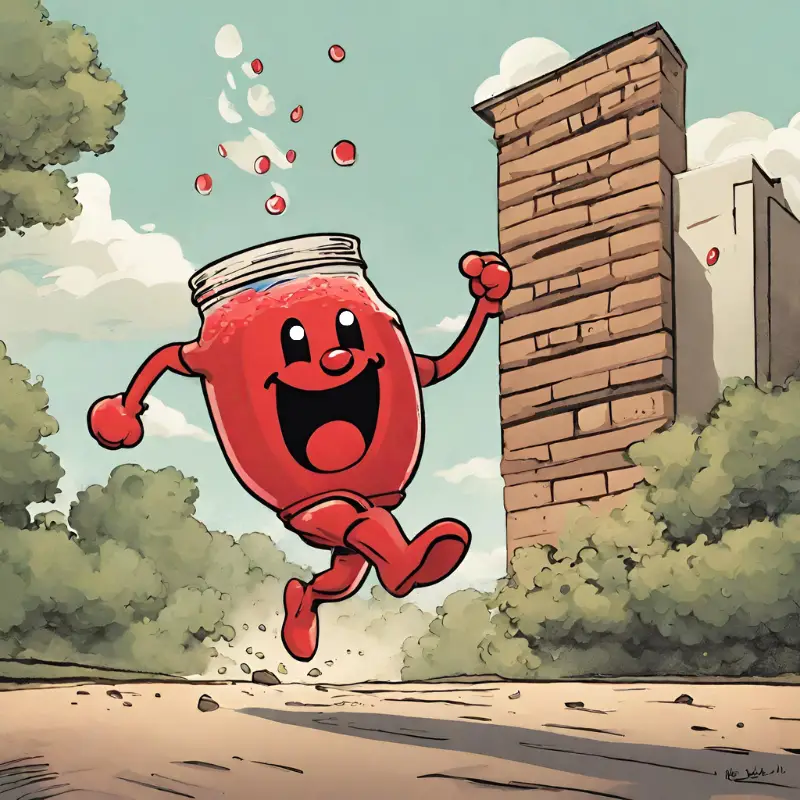
Hydration is important before, during and after exercise.
Even though Kool-Aid is not jam packed with electrolytes, it does contain sodium, which is considered more important for rapid rehydration than other minerals like potassium. This is because sodium works to stimulate sugar and water uptake in the small intestine and increases the fluid volume outside of cells, also called extracellular rehydration. Potassium, on the other hand, is the main electrolyte ion used to maintain intracellular fluid (inside the cells).
Despite potassium being important for the retention of intracellular fluid, and intracellular rehydration in the long term, some studies suggest it is not needed at all during or immediately after exercise.
Sodium is the most important electrolyte during exercise. So, the small amount of sodium in Kool-Aid, coupled with a little sugar, can definitely be good for sports hydration during and immediately after exercise. However, more complete electrolyte drinks, that include a range of minerals including potassium, would be more beneficial than Kool-Aid before exercise and during the recovery phase after exercise.
As many Kool-Aid products contain no sodium, your best bet for rapid hydration would be to go for one of the Kool-Aid Bursts or Jammers as all of these products have sodium (and a little sugar).
Other Kool-Aid Ingredients You Probably Never Heard Of:
Tocopherol
Certain flavors of Kool-Aid powders contain tocopherol including Sharkleberry Fin, Agusa Frescas Mandarina, and Mixed Berry.
Tocopherol is a type of vitamin E, which is a fat-soluble antioxidant. It is naturally found in various foods and is commonly added to processed foods and dietary supplements. Tocopherol helps protect cells from damage caused by harmful molecules called free radicals. It plays a role in maintaining skin health and has potential benefits for overall well-being. Vitamin E, including tocopherol, is essential for human health and has various forms, with alpha-tocopherol being the most biologically active.
BHA and BHT
BHA (Butylated Hydroxyanisole) and BHT (Butylated Hydroxytoluene) are synthetic antioxidants often used as preservatives in various products.
Their main role is to prevent or slow down the deterioration of fats and oils in these products, extending their shelf life. Regulatory agencies like the U.S. Food and Drug Administration (FDA) and the European Food Safety Authority (EFSA) consider both BHA and BHT safe for consumption when used within specified limits.
BHA and BHT are in some flavors of Kool-Aid powders including:
| Kool-Aid Powders | Contains BHA | Contains BHT |
| Canister Flavors: | ||
| Ice Blue Raspberry Lemonade | Yes | |
| Sharkleberry Fin | Yes | |
| Tropical Punch | Yes | |
| Cherry | Yes | |
| Cherry Limeade | Yes | Yes |
| Orange | Yes | |
| Packet Flavors | ||
| Tropical Punch | Yes | |
| Pink Lemonade | Yes | |
| Orange | Yes | |
| Lemon-Lime | Yes | |
| Lemonade | Yes | |
| Blue Raspberry | Yes | |
| Sharkleberry Fin | Yes | |
| Strawberry Lemonade | Yes | |
| Cherry | Yes | |
| On-The-Go Flavors | ||
| Tropical Punch | Yes | |
| Sugar Free Tropical Punch | Yes |
However, there has been some debate and studies about potential health risks associated with these additives. One concern is their possible role as carcinogens (cancer-causing agents), particularly in high doses. Some animal studies have suggested a link between BHA and BHT consumption and an increased risk of cancer, mainly in the liver and stomach. The International Agency for Research on Cancer (IARC) classifies BHA as “possibly carcinogenic to humans” based on these findings, though this classification doesn’t confirm a direct link to human cancer.
In fact, a large study (121,000 individuals) was conducted in the Netherlands over 6.5 years to look at what effect consuming BHA and BHT had on rates of stomach cancer. They found there was not a significant relationship with stomach cancer and consuming usual low levels of BHA and BHT.
Another concern is the potential for endocrine disruption, where BHA and BHT might interfere with the body’s hormonal balance, leading to reproductive and developmental issues. However, the evidence in this area is limited, and further research is needed to understand the extent of any endocrine-disrupting effects.
Additionally, while allergic reactions to BHA and BHT are rare, some individuals may experience skin irritation, itching, or hives when exposed to products containing these additives. There have also been cases where BHT exposure exacerbated asthma and caused respiratory symptoms, particularly in individuals with pre-existing respiratory conditions.
It’s important to emphasize that most people can safely consume products containing BHA and BHT without adverse effects. Both of these additives are listed last on Kool-Aid ingredients lists, which means they make up a relatively insignificant proportion of the drink.
Phenylalanine
The sugar-free versions of On-The-Go Kool-Aid Powders contain phenylalanine. This means phenylketonurics, who are individuals with the genetic disorder known as phenylketonuria (PKU), should avoid these Kool-Aid products.
PKU affects the body’s ability to metabolize phenylalanine properly.
In people without PKU, phenylalanine is typically converted into another amino acid called tyrosine, which is further used by the body to produce various important compounds.
However, individuals with PKU lack an enzyme called phenylalanine hydroxylase, which is necessary for the conversion of phenylalanine to tyrosine. As a result, phenylalanine levels in their blood can become dangerously elevated if they consume foods or drinks that contain this amino acid. High levels of phenylalanine can lead to a range of health problems, including intellectual disabilities, developmental issues, and neurological complications.
Phenylketonurics need to avoid these Kool-Aid On-The-Go powders:
- Sugar Free Tropical Punch
- Sugar Free Cherry
- Sugar Free Grape
Conclusion
While Kool-Aid can be a convenient and enjoyable beverage choice for many, there are considerations to keep in mind. The presence of artificial food dyes, including those linked to hypersensitivity reactions and potential behavioral issues, in all Kool-Aid products raises questions about their long-term effects, especially in children.
Artificial sweeteners, such as sucralose and acesulfame potassium, while calorie-saving, may impact taste perceptions and could potential effect blood sugar levels and the gut microbiome.
High fructose corn syrup (HFCS), a common sweetener in some Kool-Aid products, has been associated with contributing to empty calorie intake and may effect appetite regulation.
We’ve also delved into the realm of preservatives in Kool-Aid, including potassium sorbate, sodium benzoate, calcium disodium EDTA, and glycerol ester of wood rosin (GEWR). While generally recognized as safe when used within established limits, excessive ingestion of these additives may have implications for overall sodium intake and other health considerations.
On a positive note, Kool-Aid does provide a good source of vitamin C, particularly in Kool-Aid Jammers, and can play a role in sports hydration, thanks to its sodium content. However, it falls short of being a comprehensive electrolyte beverage, as it lacks potassium, which is crucial for maintaining intracellular fluid balance.
The Best Water Filter Bottle We’ve Ever Used
Clearly Filtered | Stainless Steel Filter Bottles
We really love these filter bottles for keeping your drinks cool and contaminant free! They remove 99.9% of over 220 contaminants and use BPA-free plastics and double-walled stainless steel to produce some awesome looking designs with numerous bottle sizes for every situation. You can find them here at Clearlyfiltered.com

